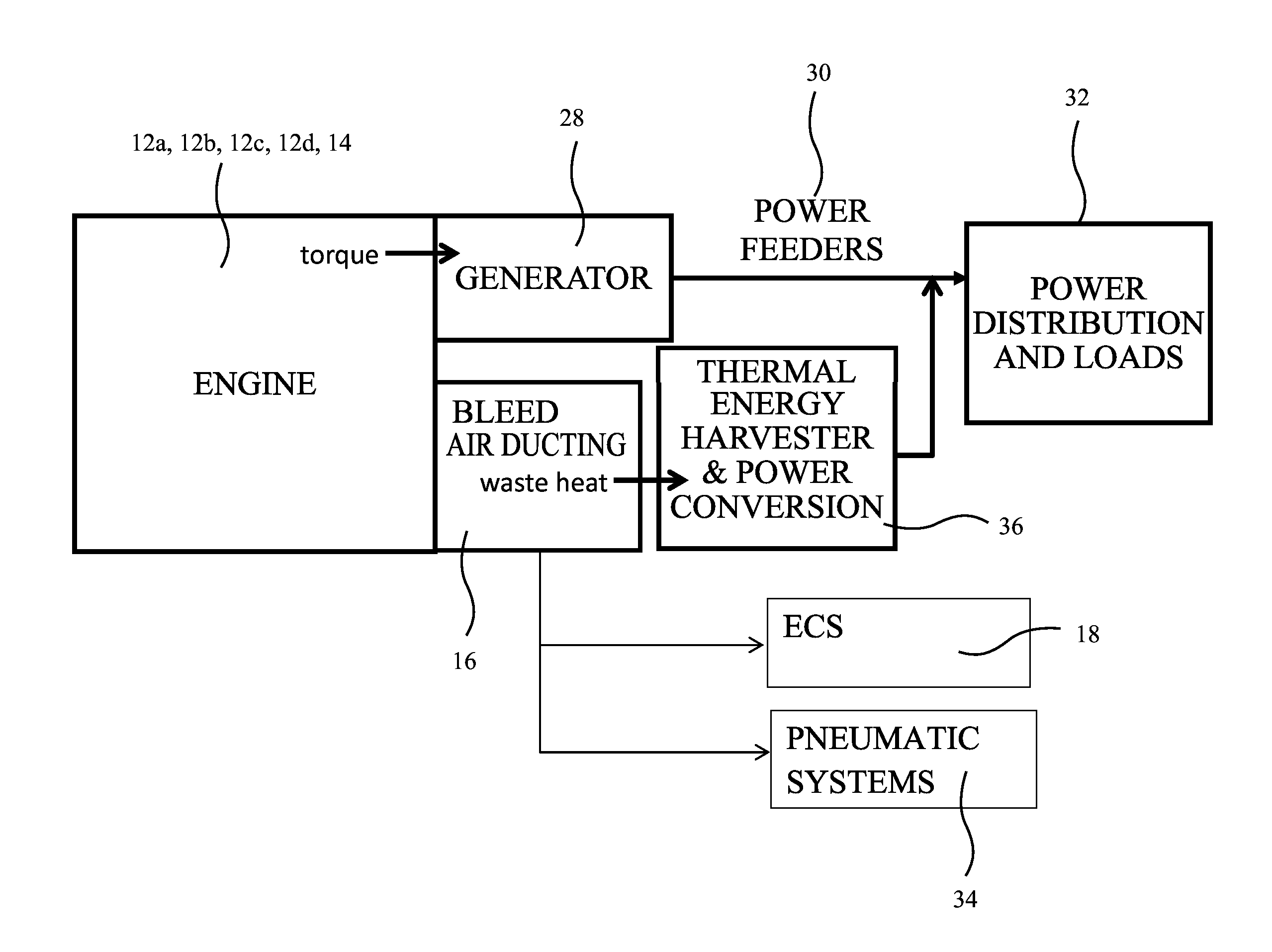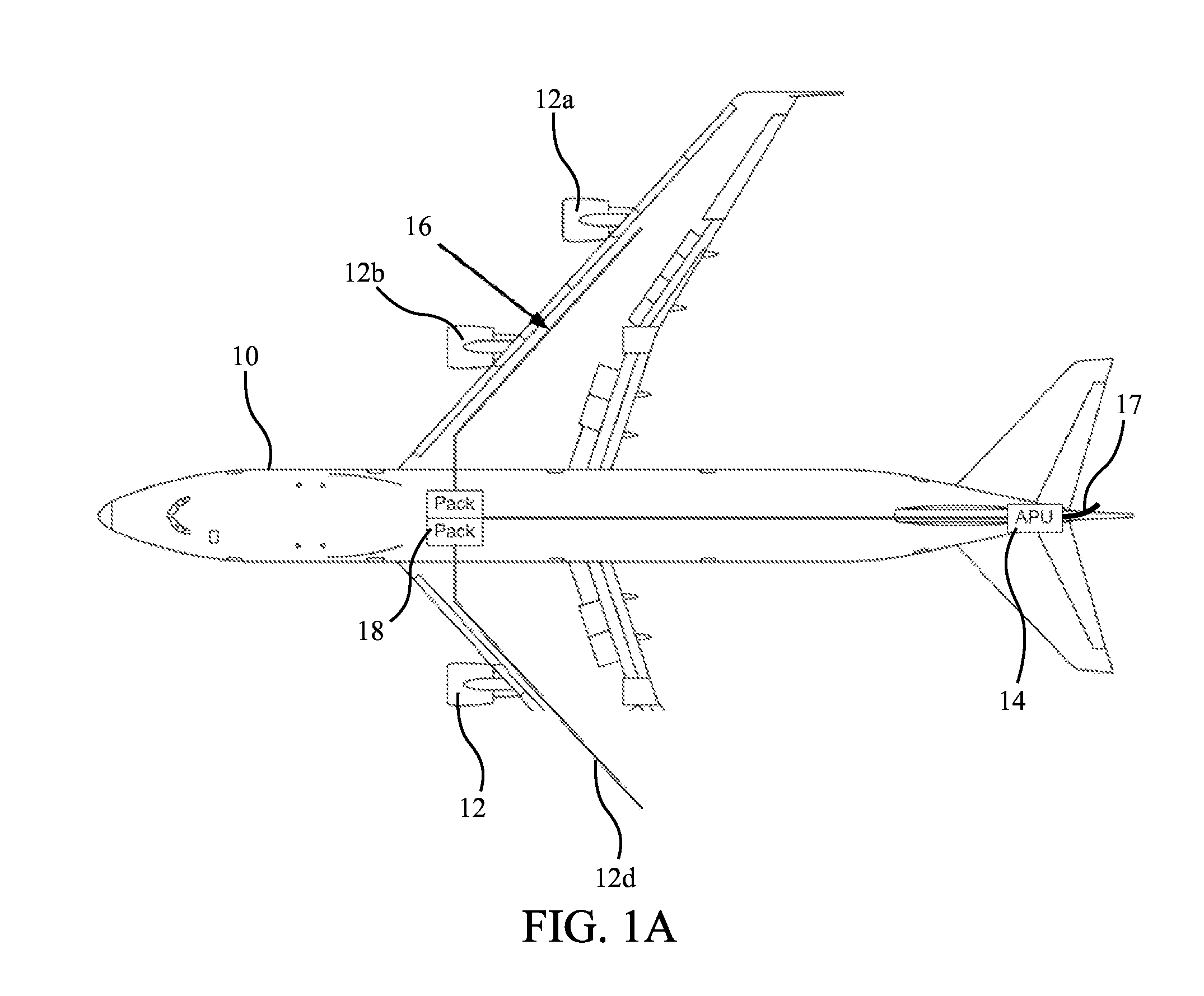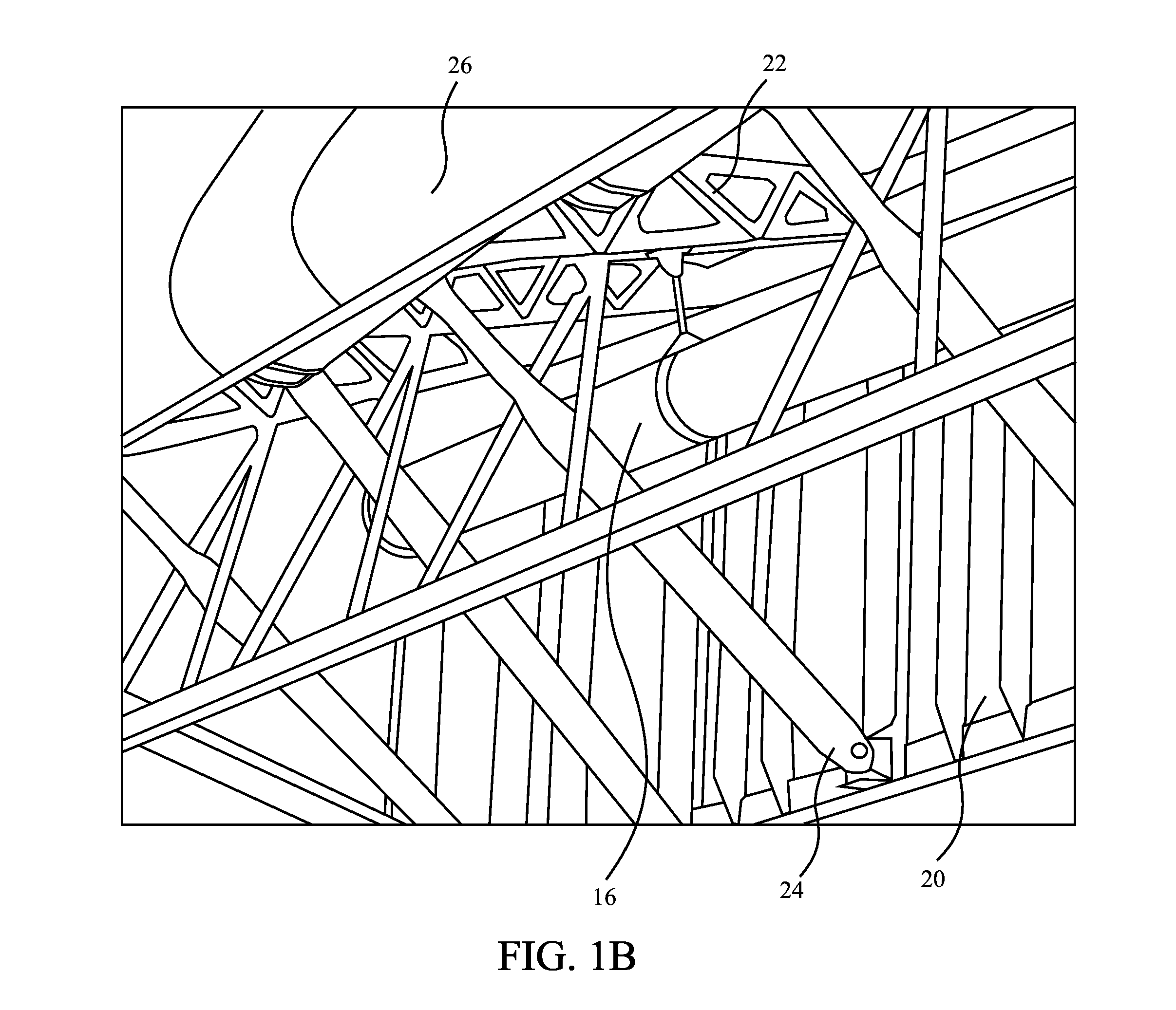Methods for recovering waste energy from bleed air ducts
a waste energy and bleed air technology, applied in the manufacture/treatment of thermoelectric devices, energy-efficient board measures, transportation and packaging, etc., can solve the problems of large fuel consumption and the inability to productively use a portion of the initial heat energy in the bleed air
- Summary
- Abstract
- Description
- Claims
- Application Information
AI Technical Summary
Benefits of technology
Problems solved by technology
Method used
Image
Examples
first embodiment
[0027]the thermal energy harvester and power conversion system is shown in FIG. 3. The thermal energy conversion device is a thermoelectric generator (TEG) 38 is mounted to bleed air duct 16 as will be described in greater detail subsequently. A convective heat exchanger 40 extends from a cold side interface of the TEG into the inner volume 42 of the leading edge section. Ambient conditions inside the inner volume 42 may vary from a sea level standard day temperature of 40-80° F. to −21° F. at operating altitude. Temperature differential between the hot side interface and cold side interface of the TEG may therefore range from approximately 220-1020° F. with typical initial bleed air temperatures of 300-380° F.
[0028]An exemplary implementation of the embodiment of FIG. 3 is shown in FIGS. 4, 5A and 5B. As seen in FIG. 4 multiple generator segments 44 are interconnected to form an encircling ring 46 which engages the bleed air duct 16. As shown in FIGS. 5A and 5B, each generator segm...
third embodiment
[0031]the thermal energy harvester and power conversion system is shown in FIG. 7 in which a pulsed heat pipe 72 is coiled on the bleed air duct 16 with a cold interface termination 74 and a hot interface termination 76 operably attached to a Rankine engine 78 as the thermal energy conversion device. The Rankine engine 78 may employ ambient conditions within the leading edge volume 42 or secondary connection to the wing skin 26 or alternative structure for the cold sink for a condenser for operation as known to those skilled in the art. An example Rankine engine for implementation in the described embodiments would be comparable to the Green Machine 4000 series of products by ElectraTherm, 4750 Turbo Circle, Reno, Nev. 89502, Electrical current generate by the Rankine engine 78 is then routed to the power feeders 30 as previously described.
fourth embodiment
[0032]FIG. 8 shows the thermal energy harvester and power conversion system also employing a Rankine engine 78. A fluid heat transfer conduit 80 is coiled on the bleed air duct 16 with a cold interface termination 82 and a hot interface termination 84 operably attached to a Rankine engine 78. A pump 86 circulates the fluid in the fluid heat transfer conduit 80. The Rankine engine 78 may employ ambient conditions within the leading edge volume 42 or secondary connection to the wing skin 26 or alternative structure for the cold sink for operation as known to those skilled in the artElectrical current generate by the Rankine engine 78 is then routed to the power feeders 30 as previously described.
[0033]In either of the third or fourth embodiments, the Rankine engine may be replaced with a Sterling engine with a regenerator acting as the cold interface.
PUM
 Login to View More
Login to View More Abstract
Description
Claims
Application Information
 Login to View More
Login to View More - R&D
- Intellectual Property
- Life Sciences
- Materials
- Tech Scout
- Unparalleled Data Quality
- Higher Quality Content
- 60% Fewer Hallucinations
Browse by: Latest US Patents, China's latest patents, Technical Efficacy Thesaurus, Application Domain, Technology Topic, Popular Technical Reports.
© 2025 PatSnap. All rights reserved.Legal|Privacy policy|Modern Slavery Act Transparency Statement|Sitemap|About US| Contact US: help@patsnap.com



